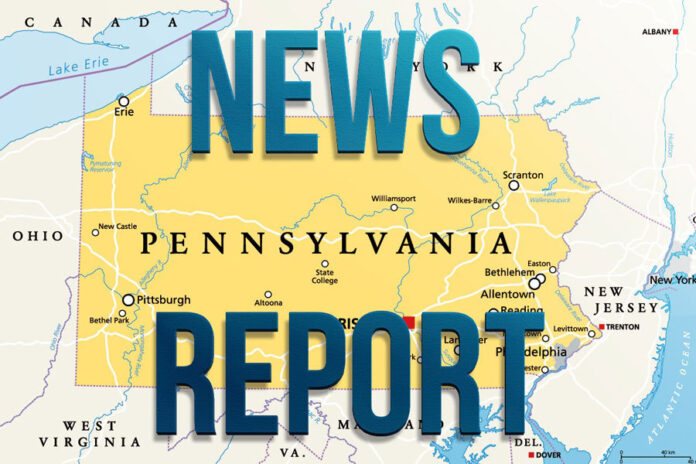Pittsburgh Post-Gazette. November 24, 2023
Editorial: It’s time to give geothermal a real chance
Geothermal energy, which pulls hot air from deep in the Earth’s crust to the surface in order to heat our homes and other buildings, deserves a second look in Pennsylvania. It’s been a go-to for humanity since Paleolithic times, when it was used to heat baths; in Ancient Rome, geothermal energy was harnessed for space heaters. The appeal is simple: if the Earth already generates heat, why not tap into that free source of energy wherever it can be found?
A significant draw of geothermal energy is that it isn’t carbon-based. As Pennsylvania producers transition away from oil and gas-based energy, geothermal provides opportunities for energy which doesn’t rely on practices that ultimately hurt the planet. In fact, geothermal energy producers can repurpose abandoned natural gas wells, using those holes dug deep into the ground to access hot air instead of gas.
Pennsylvania doesn’t have a long history of large-scale geothermal projects. Areas in the U.S. where air can be pulled from hot, wet rocks in the Earth’s crust, as in California, have tended to be the go-to spots. Appalachia’s dry, hot rocks didn’t qualify. But innovations might allow for the region to produce geothermal energy. A system similar to a home’s radiator on a large scale would pump water into the ground, where it will heat geothermally. It can then be pumped back to the surface where a heat exchanger can remove the warmth to send to homes and buildings, then send the cooled water back into the ground for another collection of heat. Many of us are already familiar with this type of system, which functions identically to the small-scale heat pumps that cool our refrigerators.
As recently reported in the Post-Gazette, West Virginia University is exploring the possibility of heating their campus with geothermal energy, making use of a gas well at the University’s Marcellus Shale Energy and Environmental Laboratory Project to study the idea. Funding from the U.S. Department of Energy supports the work, and results are promising: initial tests show water pulled from about 7,000 feet down is about 190 degrees Fahrenheit.
In the meantime, geothermal heating is already at work on a smaller-scale in Pennsylvania. In Philadelphia, for example, dozens of buildings use geothermal systems, including the Ronald McDonald House of West Philadelphia. The technology exists, and just needs to be explored and expanded.
The Pittsburgh region has plenty of rocky terrain dotted with holes from abandoned energy collection, experience with gas and oil drilling and collection, and reason to explore new frontiers in energy. Returning to the ancient practice of collecting heat from the ground beneath is a great place to start. A serious exploration of geothermal energy should be on the state’s radar as soon as possible.
___
Pittsburgh Tribune-Review. November 27, 2023
Editorial: Mail-in ballot dating issue rises from the dead
Here we go again.
In 2020, the question of dates became a major part of the ballot counting process.
When mail-in ballots were sent in by Pennsylvania voters, they had to be placed in a security envelope. That envelope was then put inside another envelope for mailing. It was part of an effort to make the ballot itself safe, but it prompted problems when signatures or dates weren’t included everywhere they needed to be.
Aside from the presidential race that held the nation’s focus, there were important lower-level races to consider. Pennsylvania’s 45th Senate District battle between incumbent Democrat Jim Brewster and Republican challenger Nicole Ziccarelli wasn’t settled until after other legislators were already sworn in. Why? Because the district straddles Allegheny and Westmoreland counties, and the two election boards were interpreting the rules in different ways.
In 2022, the big races were the U.S. Senate seat in Pennsylvania and the governorship. Once again, questions about what ballots to count and which to discard led to issues. In the primary, it took weeks to decide whether David McCormick or Dr. Mehmet Oz would be the Republican nominee. McCormick conceded and Oz ran — and lost.
And in the end, the question always seems to be decided by the courts. After repeated roller coaster trips through the state’s appeals courts, a final decision came in November 2022. The court was evenly divided by party after the death of the chief justice, leaving the issue in a middle ground purgatory. Undated or incorrectly dated outer envelope ballots would be segregated and preserved — but not counted.
Now, a year later, the issue is back as a federal court reverses course with a lawsuit filed days after the Pennsylvania Supreme Court decision. Ballots submitted on time but without the handwritten date must be counted, U.S. District Judge Susan Paradise Baxter said.
The new suit by the Pennsylvania State Conference of the NAACP, Black Political Empowerment Project, Common Cause Pennsylvania, League of Women Voters of Pennsylvania, Make The Road Pennsylvania, and POWER Interfaith claims not counting the votes is a civil rights violation.
It’s a good argument. Many petty hurdles have been thrown in front of voters over the years to disenfranchise people who deserved their say.
But those who claim the rules need to be followed aren’t wrong either, and the rules say to sign and date to make things official, just like a contract.
It’s an issue that needs to be settled permanently because people need to vote. You can’t change the rules in the middle of the process. People need to know what those rules are so they can play by them.
___
Altoona Mirror. November 25, 2023
Editorial: Strong stand must be taken on fake images
Legal experts say faked sexual images of real people are so new that federal law dealing with the problem is lagging.
The experience of a New Jersey high school should, however, motivate Congress and/or state legislatures to implement strong measures and penalties to battle this potentially destructive, horrific and unconscionable enemy of innocence and decency.
An intentionally inflicted, unrelenting nemesis such as the one in question can push a young, immature, fearful and confused mind to want to resort to suicide to escape his or her personal torment and nightmare, in much the same way bullying has claimed too many young lives.
The subject in question is not one people prefer to hear about and read about around Thanksgiving and leading up to Christmas, but really, every day is the right time when something so horrible and evil needs to be acknowledged, attacked and eradicated.
Meanwhile, an article in the Nov. 4-5 Wall Street Journal rightly left no suggestion that the situation ought to be condoned in any way or, at least in connection with the young, be regarded as part of some rite of growing up.
“When girls at Westfield High School in New Jersey found out boys were sharing nude photos of them in group chats, they were shocked, and not only because it was an invasion of privacy. The images weren’t real,” the Journal article began.
“Students said one or more classmates used an online tool powered by artificial intelligence to make the images, then shared them with others. The discovery has sparked uproar in Westfield, an affluent town outside New York City.”
According to some Westfield parents, their daughters have felt humiliated and powerless, and worry about damage to the girls should the images surface later.
In its report, the Journal explained how the secrecy over what was happening unraveled. Sophomore boys at Westfield High were acting “weird” on Monday, Oct. 16, whispering among themselves and being quieter than normal, said one mom, recounting what her daughter, a classmate, told her.
“Girls started asking questions, the mom said. Four days later, one boy told some of the girls what all the whispering was about: At least one student had used an AI-powered website to make pornographic images using girls’ photos found online, then shared them with other boys in group chats. Girls at Westfield reported the situation to school administrators.”
The Journal said several girls were told by school administrators that some boys had identified them in the generated images.
One girl who was told that her photo was used recounted how some girls had said they were uncomfortable having to attend school with someone they believed had created and shared the images.
“We’re aware there are creepy guys out there,” she said, “but you’d never think one of your classmates would violate you like this.”
Jon Bramnick, a New Jersey state senator who represents Westfield, is co-sponsoring a measure to criminalize the dissemination of such material.
For years, people have had the capability to doctor images with Photoshop and similar software but, as the Journal pointed out, new AI image-makers make it easy to produce entirely fabricated photos.
Westfield’s experience is delivering the message that the perceived newness of faked sexual images of real people already is too old.























